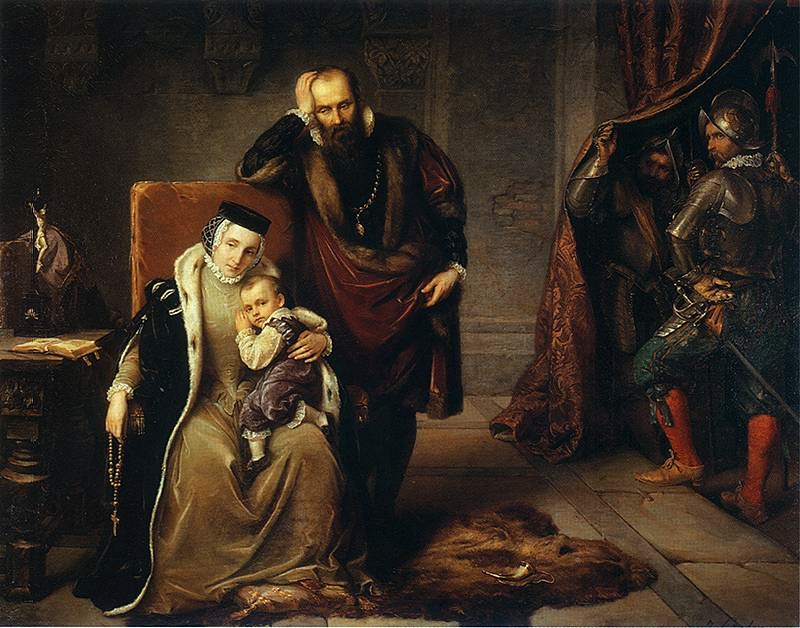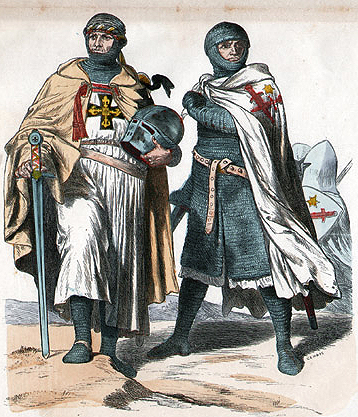|
Zygmunt Grudziński (1560–1618)
Zygmunt Grudziński (1560–1618) was a Polish noble: castellan of Kruszwica (1593–1601), starost of Inowrocław and voivode of Rawa from 1613. In 1606, he supported the rokosz of Zebrzydowski, arguing in Sandomierz that loyalty to the Polish–Lithuanian Commonwealth was more important than loyalty to the king, Sigismund III Vasa Sigismund III Vasa (, ; 20 June 1566 – 30 April 1632 N.S.) was King of Poland and Grand Duke of Lithuania from 1587 to 1632 and, as Sigismund, King of Sweden from 1592 to 1599. He was the first Polish sovereign from the House of Vasa. Re .... References 1560 births 1618 deaths Secular senators of the Polish–Lithuanian Commonwealth 17th-century Polish nobility 16th-century Polish nobility {{Poland-noble-stub ... [...More Info...] [...Related Items...] OR: [Wikipedia] [Google] [Baidu] |
Kruszwica
Kruszwica () is a town in central Poland, in the Inowrocław County in the Kuyavian-Pomeranian Voivodeship. It has a population of 9,161 (2010). Initially founded in the 6th century, Kruszwica is the oldest town in the region and features a medieval castle with a 12th-century Romanesque architecture, Romanesque church. It is situated on the shores of Gopło Lake in the historic region of Kuyavia. History ''This article incorporates text from "The Political History of Poland" (1917) by Edward Henry Lewinski-Corwin, a publication now in the public domain.'' Owing to the frequent raids of the Norsemen, the people of this region early organized an effective military force of defense. Under the protection of the military bands and their chiefs, the fields could safely be cultivated and the little, fortified towns (grody), which became places for the transaction of intertribal business and Swapping (barter), barter, for common worship, and for the storage of goods during a foreign invas ... [...More Info...] [...Related Items...] OR: [Wikipedia] [Google] [Baidu] |
Inowrocław
Inowrocław (; , ) is a city in central Poland with a total population of 68,101 (as of December 2022). It is situated in the Kuyavian-Pomeranian Voivodeship. It is one of the largest and most historically significant cities within the historic region of Kuyavia. Inowrocław is an industrial town located about southeast of Bydgoszcz known for its saltwater baths and salt mines. The town is the 5th largest Urban agglomeration, agglomeration in its voivodeship, and is a major railway junction, where the west–east line (Poznań–Toruń) crosses the Polish Coal Trunk-Line from Chorzów to Gdynia. History The town was first mentioned in 1185 as Novo Wladislaw, possibly in honor of Władysław I Herman or after the settlers from Włocławek. Many inhabitants of Włocławek settled in Inowrocław fleeing flooding. In 1236, the settlement was renamed Juveni Wladislawia. It was town privileges, incorporated two years later by Casimir I of Kuyavia, Casimir Konradowic. In medieval Lati ... [...More Info...] [...Related Items...] OR: [Wikipedia] [Google] [Baidu] |
Voivode Of Rawa
Rawa Voivodeship () was a unit of administrative division and local government in the Kingdom of Poland since 15th century until the partitions of Poland in 1795. It was part of the Greater Poland Province. Together with the Plock and Masovian Voivodeships it formed the former Duchy of Masovia. The voivodeship had its capital in the town of Rawa Mazowiecka, and its origins date back to the second half of the 15th century. In 1462, after the deaths of local Piast dynasty dukes, Mazovian lands of Rawa and Gostynin were incorporated into the Crown of the Kingdom of Poland. In 1476, the Land of Sochaczew returned to Poland as well. Borders of Rawa Voivodeship remained unchanged for more than 300 years, until the second partition of Poland in 1793, when it was annexed by the Kingdom of Prussia. Rawa Voivodeship had four senators in the Senate of the Polish–Lithuanian Commonwealth. These were the Voivode of Rawa, the Castellan of Rawa, and the castellans of Sochaczew and Gostynin. ... [...More Info...] [...Related Items...] OR: [Wikipedia] [Google] [Baidu] |
Sandomierz
Sandomierz (pronounced: ; , ) is a historic town in south-eastern Poland with 23,863 inhabitants (), situated on the Vistula River near its confluence with the San, in the Sandomierz Basin. It has been part of Świętokrzyskie Voivodeship (Holy Cross Province) since its transfer from the Tarnobrzeg Voivodeship in 1999. It is the capital of Sandomierz County. Sandomierz is known for its preserved Old Town, a major cultural and tourist attraction which the President of Poland declared a National Monument of Poland in 2017. In the past, Sandomierz was one of the most important urban centers not only of Lesser Poland, but also of the whole country. It was a royal city of the Polish Crown and functioned as a regional administrative centre from the High Middle Ages to the 19th century. Etymology The name of the city might have originated from the Old Polish ', composed of ' (from the verb ' "to judge") and ' ("peace"), or more likely from the antiquated given name Sędzimir, o ... [...More Info...] [...Related Items...] OR: [Wikipedia] [Google] [Baidu] |
Polish–Lithuanian Commonwealth
The Polish–Lithuanian Commonwealth, also referred to as Poland–Lithuania or the First Polish Republic (), was a federation, federative real union between the Crown of the Kingdom of Poland, Kingdom of Poland and the Grand Duchy of Lithuania, existing from 1569 to 1795. This state was among the largest, most populated countries of 16th- to 18th-century Europe. At its peak in the early 17th century, the Commonwealth spanned approximately and supported a multi-ethnic population of around 12 million as of 1618. The official languages of the Commonwealth were Polish language, Polish and Latin Language, Latin, with Catholic Church, Catholicism as the state religion. The Union of Lublin established the Commonwealth as a single entity on 1 July 1569. The two nations had previously been in a personal union since the Union of Krewo, Krewo Agreement of 1385 (Polish–Lithuanian union) and the subsequent marriage of Queen Jadwiga of Poland to Grand Duke Jogaila of Lithuania, who was cr ... [...More Info...] [...Related Items...] OR: [Wikipedia] [Google] [Baidu] |
Sigismund III Vasa
Sigismund III Vasa (, ; 20 June 1566 – 30 April 1632 N.S.) was King of Poland and Grand Duke of Lithuania from 1587 to 1632 and, as Sigismund, King of Sweden from 1592 to 1599. He was the first Polish sovereign from the House of Vasa. Religiously zealous, he imposed Catholicism across the vast realm, and his crusades against neighbouring states marked Poland's largest territorial expansion. As an enlightened despot, he presided over an era of prosperity and achievement, further distinguished by the transfer of the country's capital from Kraków to Warsaw. Sigismund was the son of King John III of Sweden and his first wife, Catherine Jagiellon, daughter of King Sigismund I of Poland. Elected monarch of the Polish–Lithuanian Commonwealth in 1587, he sought to unify Poland and Sweden under one Catholic kingdom, and when he succeeded his deceased father in 1592 the Polish–Swedish union was created. Opposition in Protestant Sweden caused a war against Sigismund headed ... [...More Info...] [...Related Items...] OR: [Wikipedia] [Google] [Baidu] |
1560 Births
Year 1560 ( MDLX) was a leap year starting on Monday of the Julian calendar. Events January–March * January 7 – In the Kingdom of Scotland, French troops commanded by Henri Cleutin and Captain Corbeyran de Cardaillac Sarlabous sail across the Firth of Forth from Leith, which they are occupying, and fight with the Lords of the Congregation at Pettycur Bay near Kinghorn. * February 27 – Treaty of Berwick: Terms are agreed upon with the Lords of the Congregation in Scotland, for forces of the Kingdom of England to enter Scotland, to expel French troops defending the Regency of Mary of Guise. * March 7 – A Spanish-led expedition, commanded by Juan de la Cerda, 4th Duke of Medinaceli, overruns the Tunisian island of Djerba. * March 17 – Leaders of the Amboise conspiracy, including Godefroy de Barry, seigneur de La Renaudie, make an unsuccessful attempt to storm the château of Amboise, where the young French king and queen are residing. ... [...More Info...] [...Related Items...] OR: [Wikipedia] [Google] [Baidu] |
1618 Deaths
Events January–March * January 6 **Jahangir, ruler of the Mughal Empire in northern India, gives an audience for the first time to a representative of the British East India Company, receiving Sir Thomas Roe at the capital at Ahmedabad. **Ben Jonson's play '' Pleasure Reconciled to Virtue'' is given its premiere performance, presented at the Palace of Whitehall in London. * January 28 – Rules are established for the Ōoku, the section of Edo Castle that housed the Shōgun's consort and his concubines. * February 18 – Jeong In-hong becomes the new Chief State Councillor (the ''Yeonguijeong'', similar to a Prime Minister) of the Joseon Kingdom in what is now North Korea, after being appointed by the Emperor Gwanghaegun. * February 26 – Osman II deposes his uncle Mustafa I as Ottoman sultan (until 1622). * March 8 – Johannes Kepler discovers the third law of planetary motion (after some initial calculations, he soon rejects the idea, but ... [...More Info...] [...Related Items...] OR: [Wikipedia] [Google] [Baidu] |
Secular Senators Of The Polish–Lithuanian Commonwealth
Secularity, also the secular or secularness (from Latin , or or ), is the state of being unrelated or neutral in regards to religion. The origins of secularity can be traced to the Bible itself. The concept was fleshed out through Christian history into the modern era. Since the Middle Ages, there have been clergy not pertaining to a religious order called "secular clergy". Furthermore, secular and religious entities were not separated in the medieval period, but coexisted and interacted naturally. The word ''secular'' has a meaning very similar to profane as used in a religious context. Today, anything that is not directly connected with religion may be considered secular, in other words, neutral to religion. Secularity does not mean , but . Many activities in religious bodies are secular, and though there are multiple types of secularity or secularization, most do not lead to irreligiosity. Linguistically, a process by which anything becomes secular is named ''secularization' ... [...More Info...] [...Related Items...] OR: [Wikipedia] [Google] [Baidu] |
17th-century Polish Nobility
The 17th century lasted from January 1, 1601 (represented by the Roman numerals MDCI), to December 31, 1700 (MDCC). It falls into the early modern period of Europe and in that continent (whose impact on the world was increasing) was characterized by the Baroque cultural movement, the latter part of the Spanish Golden Age, the Dutch Golden Age, the French '' Grand Siècle'' dominated by Louis XIV, the Scientific Revolution, the world's first public company and megacorporation known as the Dutch East India Company, and according to some historians, the General Crisis. From the mid-17th century, European politics were increasingly dominated by the Kingdom of France of Louis XIV, where royal power was solidified domestically in the civil war of the Fronde. The semi-feudal territorial French nobility was weakened and subjugated to the power of an absolute monarchy through the reinvention of the Palace of Versailles from a hunting lodge to a gilded prison, in which a greatly expande ... [...More Info...] [...Related Items...] OR: [Wikipedia] [Google] [Baidu] |






